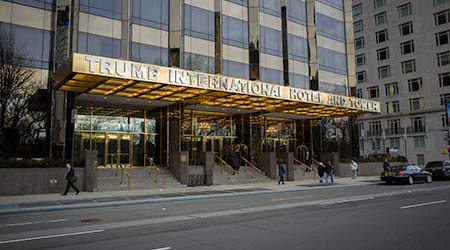
Lighting Controls Lead LED Conversation
May 24, 2019
Lightfair International is where the entire lighting industry gets together to debut innovations and showcase future concepts. It’s an enormous show, but meeting with a dozen or so manufacturers of products geared at commercial facilities, some themes start to emerge. Here are three observations from #LFI2019 facility managers should keep on their radar:
— Performance: LED fixtures, while numerous, do not have a staggering amount of differentiation between them. How manufacturers are seeking to differentiate their product is through a performance arms race. At least one manufacturer had luminaires that can produce 10,000 K. For reference, 5,000 K is the color temperature of your average “bright white” bulb. So who needs 10,000 K? Nobody. But does anyone need to go 0-60 in 3 seconds either?
In addition to face-melting Ks, manufacturers are continuing to push lumens per watt (highest I heard was 190 lm/watt), longer runs of linear LEDs (by going to AC direct or driverless fixtures), and CRIs as high as 100.
— Controls: Lighting controls are the biggest area of growth in lighting. LED luminaires with onboard sensors have reached a point of maturity where they are highly capable and increasingly affordable. But without controls, it’s like having a smartphone with no apps. Sure, you can get illumination and limited control through occupancy and daylight sensing. But if you stop there, there’s an entire universe of capability, energy savings, and building intel you’re leaving in the ceiling.
For a couple of years now, the recommendation to facility managers considering LED fixtures for new construction or retrofit has been to put in the capability even if they’re not ready to activate it with the current lighting project. The industry is doubling down on this concept, with several manufacturers producing luminaires with sensors to targeted to the contractor and distributor market. This achieves two things. First, it facilitates codes compliance for sensing requirements in the build stage of a project. Secondly, if tenant space comes pre-loaded with smart-capable fixtures, that takes away the initial hurdle to implementing a controls solution once the tenant moves in.
Another way manufacturers are trying to facilitate the move to more robust adoption of sophisticated lighting controls is by offering field-upgradable systems, which step up from basic, to mid-grade, to full-implementation when the use case and budget allows. The software can be pushed out to the fixture through the cloud in many cases.
— Data: Smart LED luminaires with on board sensors and robust controls can do everything from track assets to analyze space utilization. But beyond gathering data with the lights, facilities can now transmit data WITH the lights. This is not new, but manufacturers have made advances that have moved this concept from the bleeding edge to the cutting edge. Still niche, but very much in the realm of the possible. Closer to coming to a building near you is visible light communication (VLC). This tech leverages LED’s ability to blink at a rate faster than perceivable by a human eye to communicate with the camera on a smartphone. The advance is that instead of needing a VLC fixture, at least two manufacturers have VLC lamps that retrofit into existing fixtures, making the hurdle to adoption much lower.
Also, now being deployed by at least one major manufacturer is LiFi. Again, LEDs blinking faster than can be seen are used to transmit data, at speeds up to 30 Mbps, with higher speeds soon anticipated. One of the challenges of WiFi is that everything in the built environment wants to use it, but there is only so much bandwidth available. Manufacturers solve for this by installing multiple radios on their devices which can hop frequencies, or by using a different communications protocol. LiFi provides an alternate path to transmit data, which could potentially take some of the pressure off the WiFi system, among other benefits. Stay tuned, as that tech is still in very early days. But at the rate the lighting industry iterates, the future is bright.
Naomi Millán is senior editor of Building Operating Management.
Next
Read next on FacilitiesNet












